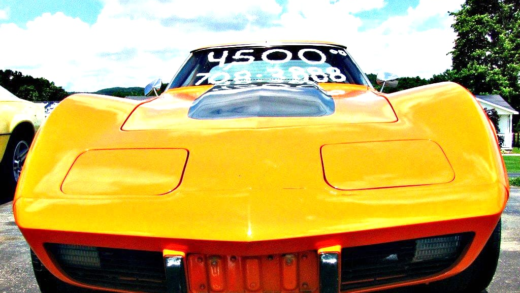NASCAR race cars have evolved significantly over the years, enhancing safety and performance. Their unique features, such as oval tracks and drafting, set them apart from other racing formats. On race day, thorough preparations ensure optimal performance.
Key Components of a NASCAR Race Car
NASCAR race car components are specialized and designed for high performance on the track. The essential parts include:
- Chassis: The frame provides structural integrity and supports other components.
- Engine: A powerful V8 engine delivers speed and acceleration.
- Suspension: Enhances handling and stability, allowing cars to navigate turns at high speeds.
- Tires: Designed for grip and durability, tires are crucial for optimal performance.
- Brakes: High-performance brakes ensure quick stopping power.
- Safety Equipment: Includes roll cages, harnesses, and fire suppression systems.
Each component is meticulously crafted to meet strict NASCAR regulations and performance standards.
Differences Between NASCAR and Street Cars
NASCAR cars significantly differ from street cars in design and performance. Key differences include:
- Performance: NASCAR vehicles are built for speed and endurance, while street cars prioritize comfort and efficiency.
- Design: Aerodynamic shapes and lightweight materials characterize NASCAR cars, unlike the more utilitarian designs of street cars.
- Engine: NASCAR engines are modified for higher horsepower and torque, unlike standard street car engines.
- Safety Features: NASCAR vehicles include advanced safety features that exceed those found in street cars.
Understanding these differences highlights the unique engineering that goes into NASCAR vehicles.
Materials Used in NASCAR Race Cars
The materials used in NASCAR race cars are critical for performance and safety. Common materials include:
- Carbon Fiber: Lightweight and strong, it is used in various components to reduce weight.
- Aluminum: Commonly used for the chassis and engine components due to its strength-to-weight ratio.
- Steel: Utilized for the roll cage and other structural elements for durability.
- Composites: Advanced composites are used in body panels for aerodynamics and performance.
These materials contribute to the overall effectiveness and safety of the race cars.
NASCAR Aerodynamics Design
NASCAR aerodynamics design plays a vital role in optimizing speed and performance. Key aspects include:
- Shape: The sleek design reduces drag, allowing cars to slice through the air efficiently.
- Front Splitters: These components increase downforce, enhancing grip on the track.
- Rear Spoilers: Adjusted for maximum downforce, they help stabilize the car at high speeds.
- Wind Tunnel Testing: Teams utilize wind tunnels to refine designs and improve aerodynamics.
Effective aerodynamics is essential for competitive performance in NASCAR racing.
Engine Performance in NASCAR Race Cars
The engine performance in NASCAR race cars is paramount, as it directly impacts speed, acceleration, and overall competitiveness on the track. NASCAR race cars are equipped with powerful V8 engines, typically generating over 700 horsepower. This immense power allows these cars to reach high speeds—often exceeding 200 mph during races.
Key features of NASCAR engines include:
- High Horsepower: The engines are specially designed for maximum power output, enabling quick acceleration.
- Modified Components: Parts such as pistons, camshafts, and carburetors are customized for improved performance.
- Fuel Efficiency: NASCAR engines use a specific blend of fuel that optimizes performance while ensuring reliability.
- Durability: Engines are built to withstand extreme conditions, including high temperatures and intense vibrations.
In conclusion, the engine is the heart of a NASCAR race car, playing a critical role in determining the car’s performance and the team’s success during races.
Safety Features in NASCAR Design
Safety features in NASCAR design are meticulously integrated to protect drivers during high-speed races. With the inherent risks of racing, NASCAR has implemented numerous safety innovations to ensure driver well-being.
Some essential safety features include:
- Roll Cages: Constructed from high-strength steel, roll cages provide structural integrity and protect drivers in case of rollovers.
- HANS Device: This head and neck support device prevents head movement during crashes, significantly reducing the risk of injury.
- Fire Suppression Systems: Equipped with fire extinguishers, these systems activate automatically in case of fire, protecting the driver.
- Safety Harnesses: Multi-point harnesses secure drivers firmly in their seats, minimizing movement during collisions.
These safety features showcase NASCAR’s commitment to prioritizing driver safety, making it one of the safest motorsport organizations.
Assembling a NASCAR Race Car
Assembling a NASCAR race car is a complex process that requires precision and expertise. Each car is built with meticulous attention to detail to ensure optimal performance and safety on the track.
The assembly process involves several key steps:
- Chassis Construction: The chassis is the foundation of the car, constructed from high-strength materials to ensure durability.
- Engine Installation: The powerful V8 engine is installed, with all necessary modifications for optimal performance.
- Suspension Setup: The suspension system is calibrated to enhance handling and stability during races.
- Bodywork and Aerodynamics: The body panels are fitted, focusing on aerodynamic efficiency to reduce drag.
- Final Adjustments: Before the car hits the track, final adjustments are made to ensure everything operates perfectly.
The assembly of a NASCAR race car reflects the collaboration of skilled engineers and mechanics, all working together to create a vehicle that can compete at the highest level.
Evolution of NASCAR Race Cars
The evolution of NASCAR race cars reflects the technological advancements and changing regulations in motorsports. Over the decades, NASCAR vehicles have undergone significant transformations, impacting their performance, safety, and design.
Key milestones in the evolution include:
- 1970s: The introduction of aerodynamic designs, such as the wedge shape, enhanced speed.
- 1980s: The use of more powerful engines, pushing horsepower limits higher than ever.
- 1990s: Safety features like the HANS device became standard, addressing driver safety concerns.
- 2000s: The shift to Car of Tomorrow (COT) introduced enhanced safety and performance standards.
- 2010s: Focus on fuel efficiency and hybrid technology began to emerge in the design philosophy.
These changes showcase NASCAR’s commitment to innovation, ensuring that race cars not only perform at high levels but also prioritize driver safety.
What Makes NASCAR Races Unique
The uniqueness of NASCAR races lies in their combination of speed, strategy, and fan engagement. Unlike other racing formats, NASCAR offers a distinct experience, both for drivers and spectators.
Factors contributing to NASCAR’s uniqueness include:
- Oval Tracks: Races primarily occur on oval tracks, creating a different racing dynamic compared to road courses.
- Drafting: The aerodynamic advantage of drafting allows cars to gain speed by closely following one another.
- Team Strategy: Crew teams play a vital role in pit stops, strategy, and car adjustments during races.
- Fan Interaction: NASCAR fosters a community-like atmosphere, with fans often engaging with drivers and teams directly.
This blend of elements makes NASCAR a one-of-a-kind racing spectacle, attracting millions of fans worldwide.
Race Day Preparation for NASCAR Cars
Race day car preparation in NASCAR is a meticulous process that ensures each vehicle is ready for the grueling competition. Teams take numerous steps to optimize performance and reliability.
Essential steps in race day preparation include:
- Pre-Race Inspection: Cars undergo thorough inspections to ensure compliance with NASCAR regulations.
- Final Adjustments: Teams make last-minute tweaks to tire pressure, suspension settings, and aerodynamics.
- Fueling: Cars are fueled with a specific blend to optimize performance throughout the race.
- Driver Briefing: The team meets with the driver to discuss strategy, track conditions, and race expectations.
- Warm-Up Laps: Drivers take warm-up laps to gauge car performance and make any final adjustments.
These preparations are critical for ensuring that each NASCAR race car is primed for peak performance on race day, significantly influencing the outcome of the competition.





Comments are closed.